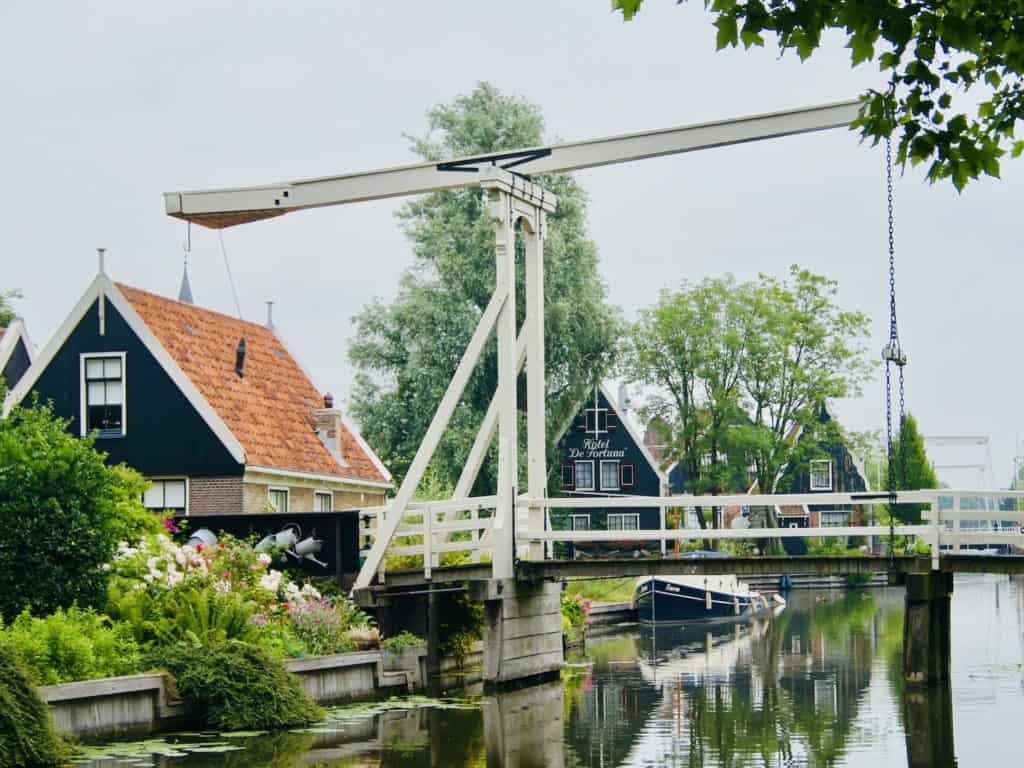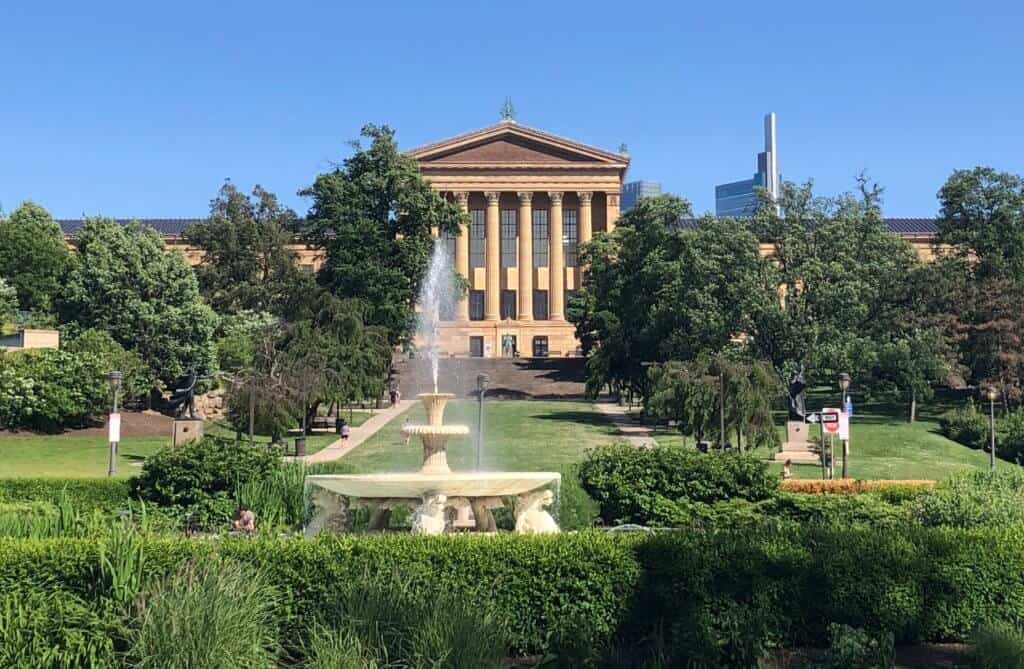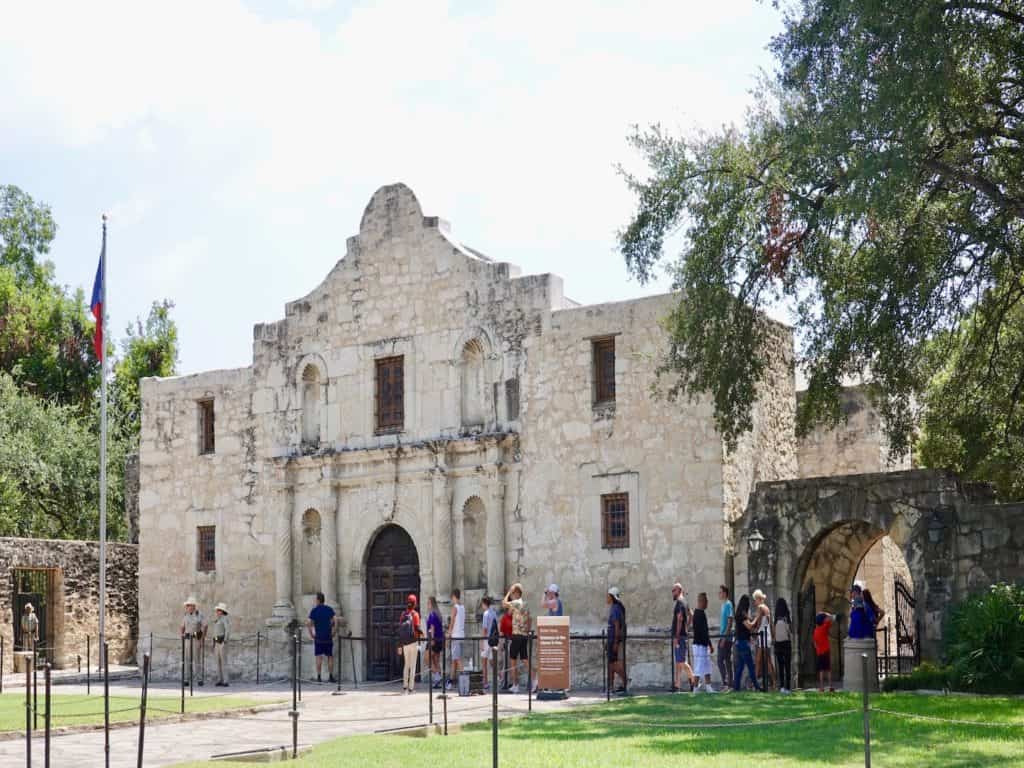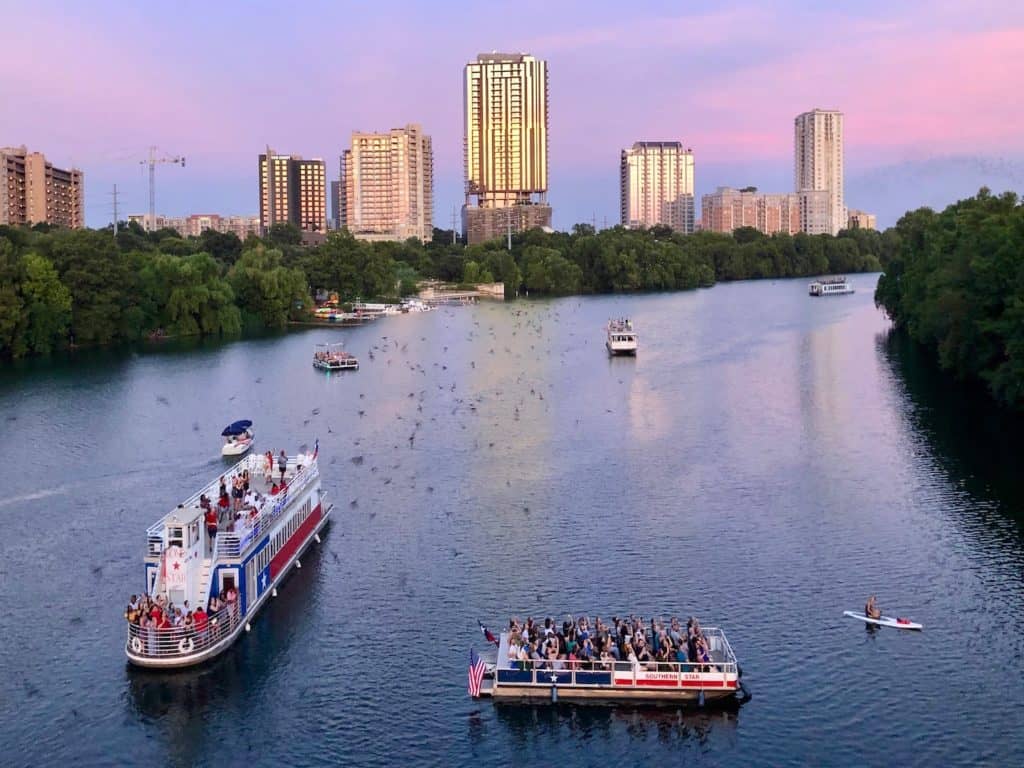Pittsburgh and western Pennsylvania have a deep history and a variety of attractive sites to lure visitors interested in exploring this corner of the Keystone State. There are several places you don’t want to miss when visiting the region including historic sites (including some forts dating to the French and Indian War); museums rich with exhibits highlighting histories of industrial innovation and production, culture, sports, and more; two homes designed by Frank Lloyd Wright; miles of hiking and biking trails to discover; waterfalls and other scenic sights; plus the Flight 93 Memorial. The sites along with the amazing restaurants and shops all blend to make a trip to this area quite appealing.
To avoid disappointment, check the days and hours of operation of the places you plan to visit before beginning your journey to the area.
The Area’s Place in History
The French and Indian War (1754-1763) started in western Pennsylvania. As a result, several of the sites in the area relate back to it. The war was a North American conflict between the French (who then controlled much of eastern Canada) and the British (who ruled the American colonies). One thing each empire wanted was control of what is now Pittsburgh because of its strategic location at the convergence of three rivers (Allegheny, Ohio, and Monongahela).
Pittsburgh
What attracts you to Pittsburgh? History? Sports? Cultural activities? Visiting a student at one of the city’s prestigious universities? The second most populous city in Pennsylvania (after Philadelphia) draws a lot of travelers for a multitude of reasons. Needless to say, there’s too much to do and see in one trip (unless you have a few weeks to spend here!). This article highlights some places that should be on the top of everyone’s list when visiting Pittsburgh. They’re sure to complement the other places that are must-sees for you.
You can drive around the city on your own, of course. But if your goal is to get a good overview of the city and visit some key sites, you may want to consider riding on the Pittsburgh Tour Company Hop-On Hop-Off double-decker bus. It stops at 21 locations and offers interesting commentary along the way. My husband and I used the bus and found it convenient; it sure beats driving to each of the places on our list and then finding parking spots.
Getting Around: Pittsburgh’s Riverside Trail
The extensive 24-mile Three Rivers Heritage Trail is a riverside paved path that connects so many popular spots. (Check out the Three Rivers Heritage Trail map if interested in getting around the riverside locales on foot or bike. Local bike shops have rentals available.)
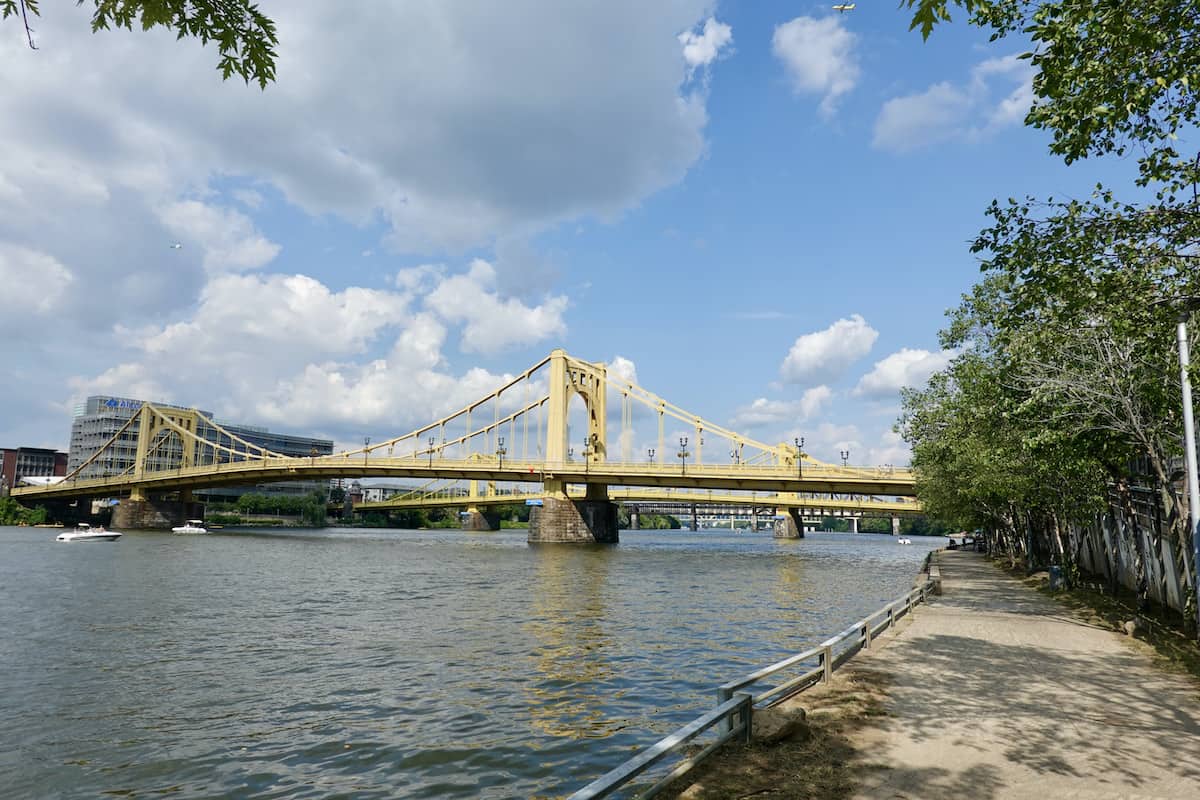
Getting Around: The Great Allegheny Passage
If hiking or biking is your thing, you might want to explore the possibilities along the Great Allegheny Passage (GAP) that runs from Pittsburgh to Cumberland, Maryland. There are several places in the area to jump on the GAP. The GAP website has interactive maps to help you plan your trek. And check out bike rental companies if you want to take a ride on the GAP during your free time.
Mount Washington (Pittsburgh)
Views of Pittsburgh from the top of Mount Washington are sweeping. This steep hill sits on the south bank of the Monongahela River and has several overlooks from which to soak in views of the City of Bridges. (Pittsburgh has over 400 bridges!) There are also several restaurants on Mount Washington.
Pittsburgh’s Funiculars
Access the vistas from Mount Washington by taking one of the two funiculars: the Monongahela Incline or the Duquesne Incline. A third option is driving up and parking along Grandview Avenue and walking to the various overlooks. The inclines were built in the 19th century to aid laborers (mostly German immigrants) who worked in the flatter section of land below but who lived high above on this hilltop. In the 1860s Pittsburgh’s industries had a high demand for labor, but the city was short on housing; thus, many laborers found themselves living on Mount Washington.
The two inclines were built in the 1870s and were listed on the U.S. National Register of Historic Places in the 1970s. Imagine how many steps were involved in climbing up after a long day’s work before the funiculars were built!
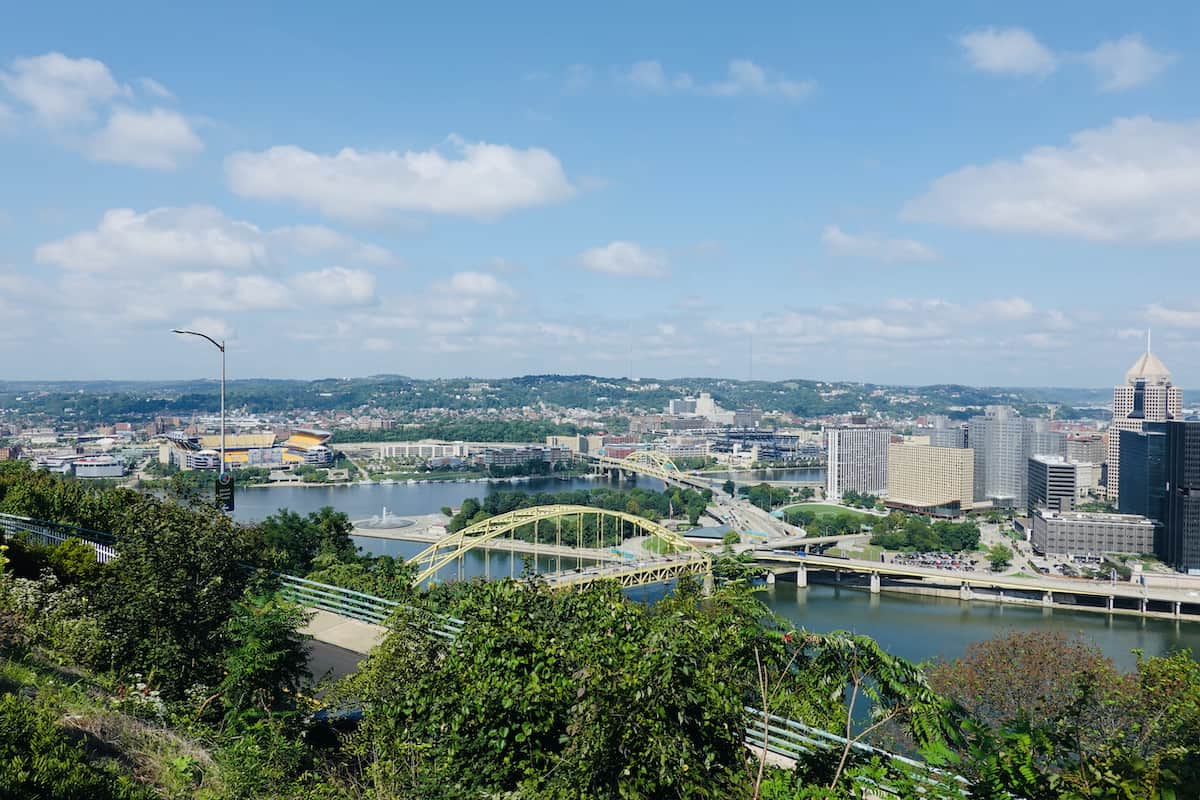
John Heinz History Center (Pittsburgh)
This excellent museum covers a lot of history including the French and Indian War; innovations from the Pittsburgh region that made huge contributions to America’s economic, medical, and entertainment realms; industrial history that included Pittsburgh behemoths like H.J. Heinz, Westinghouse, Alcoa, and Gulf; western Pennsylvania sports (e.g., Steelers, Penguins, and Pirates); and entertainment (e.g., the growth of jazz, Mr. Rogers Neighborhood). Formally known as the Senator John Heinz History Center, this six-floor museum is an affiliate of the Smithsonian Institution.
A Focus on Progress
Interesting information, exhibits, and artifacts abound at the John Heinz History Center. Although many exhibits are focused on Pittsburgh, they also represent the innovation and growth of the U.S. as a whole. For example, a display about George Westinghouse relates how his invention of the train air brake in 1869 allowed trains to stop safely. Before this invention, a railroad worker had to jump along the tops of speeding train cars and crank each train car’s wheels to apply its brakes. Safer trains quickly spurred progress: the transportation of products, people, and information for the entire country.
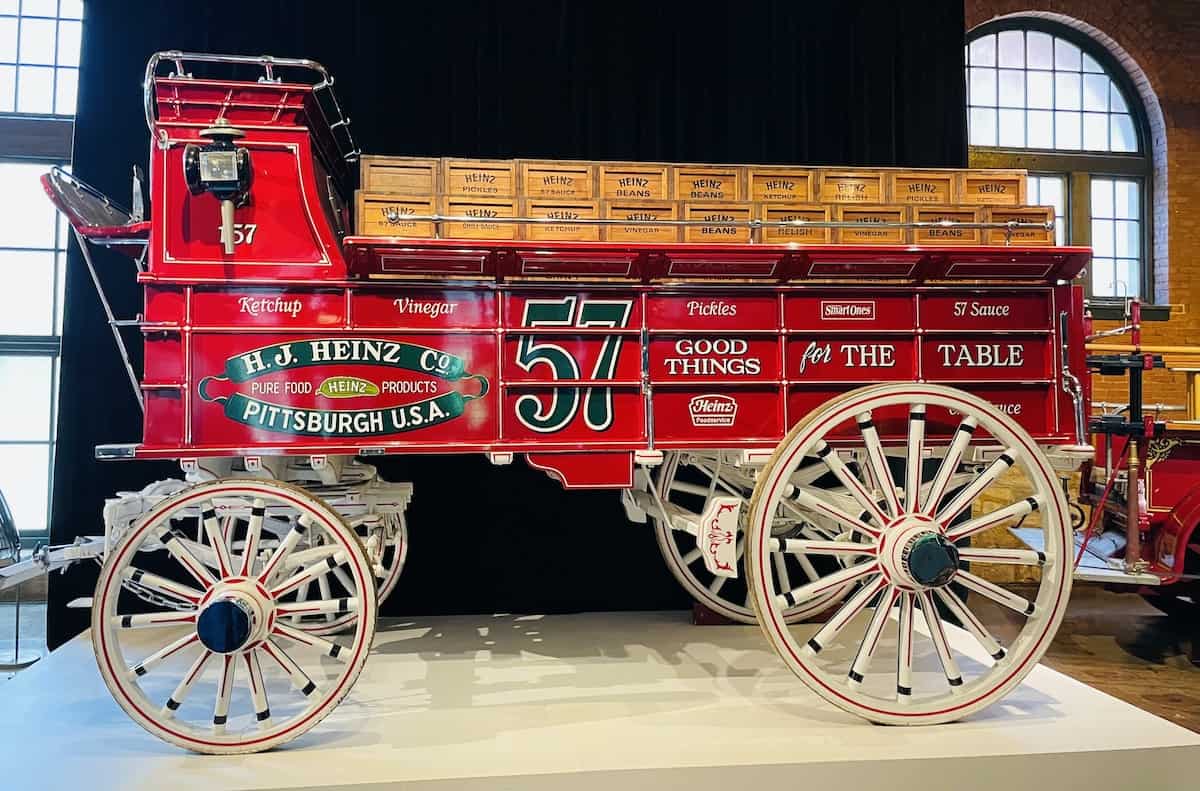
The Heinz exhibit goes far beyond the company’s flagship products, like ketchup and Heinz 57 sauce, to how the Heinz Company made significant investments including the development of seeds for tomato and cucumber varieties that would be used for ketchup and pickles, development of unique glass bottles, to the distribution of products. It’s essentially a profile of a company that successfully managed its raw materials, championed quality control in its manufacturing, marketed its product to attract more and more buyers, and established a strong distribution strategy to get its products into consumers’ homes. Just 17 years after its inception in 1869, the Heinz Company grew to become an international firm.
Visiting the Heinz History Center
Plan on spending several hours at the Heinz History Center. There are many interesting things to see and lots of information to soak in. When my husband and I visited, we arrived when the museum opened and spent a few hours there, took a break and walked to a nearby restaurant for lunch, and returned to the museum in the afternoon – refreshed and reenergized – to continue enjoying the exhibits. The museum is on a trolley stop for the Hop On, Hop Off bus and is across the street from a Hampton Inn (where we stayed). Location: 1212 Smallman Street, Pittsburgh (in the Strip District)
Point State Park (Pittsburgh)
Many people enjoy gathering at the 36-acre Point State Park because it’s at the intersection of Pittsburgh’s three rivers. Point State Park is dog-friendly and has a large fountain (where people like to lounge while taking in the sights) and an expansive grassy area. From here, you can peer over the water to Heinz Field (where the Pittsburgh Steelers play) and PNC Park (home of the Pittsburgh Pirates) on the opposite bank. The paved Three Rivers Heritage Trail connects Point State Park with plenty of other Pittsburgh sites.
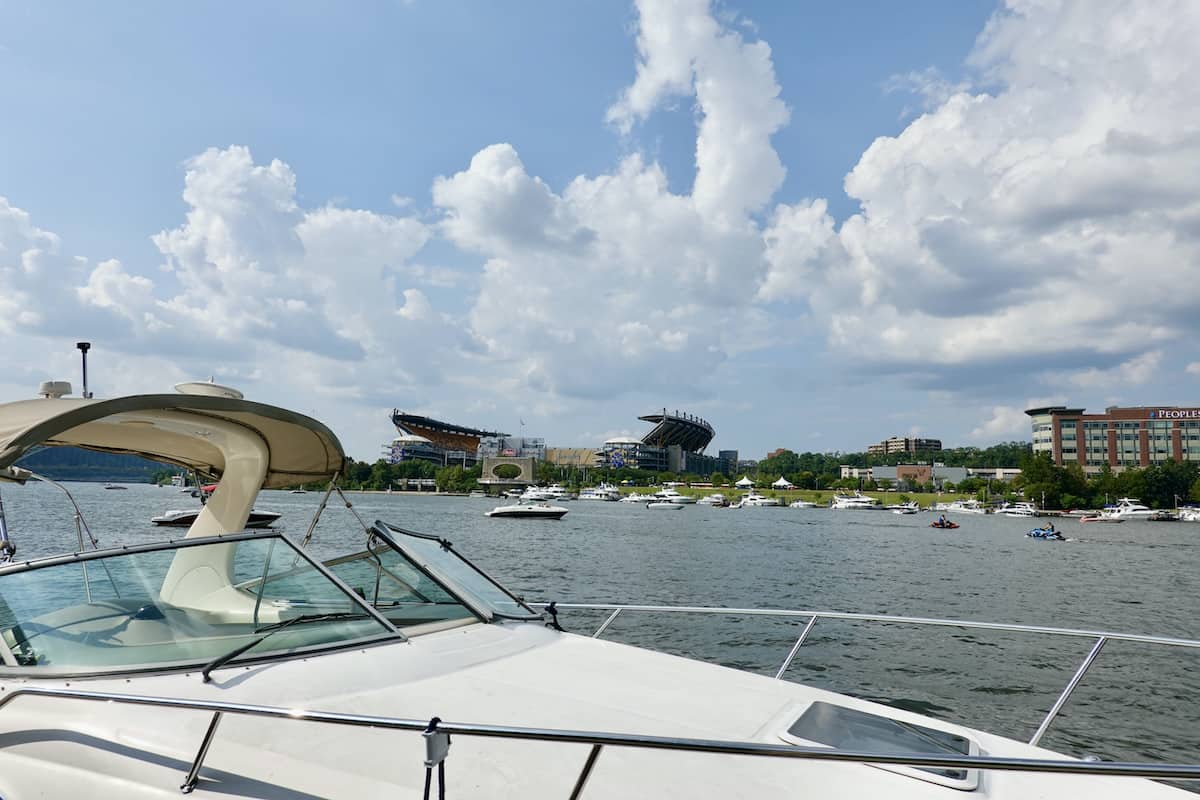
Point State Park is a major draw because of its prime riverside location. It also was the site of two 18th-century forts from the French and Indian War: Fort Duquesne and Fort Pitt.
Fort Duquesne
Fort Duquesne was built in 1754 and commanded by the French during the French and Indian War. The French later abandoned it in 1758 as the British forces advanced to attack the French here. The French Canadians fled and set fire to the fort. There are no ruins of the fort today, but its original perimeter is now outlined in granite in Point State Park.
Fort Pitt
Fort Pitt was built by the British in the late 1750s during the French and Indian War. Today the Fort Pitt Museum chronicles the causes, events, and aftermath of the French and Indian War at the location of the original Fort Pitt (which no longer exists). The museum adeptly describes the varying interests of the three involved parties (the French, the British, and the Native Americans) — all with an eye on dominating the fertile region and strategic location at what was once the edge of the frontier. It also has exhibits on the American Revolution and the early days of Pittsburgh. Outside the museum sits the Block House, an original building dating to 1764 that was once part of Fort Pitt. The Fort Pitt museum is operated by the John Heinz History Center (mentioned earlier in this article). Location: Point State Park, 601 Commonwealth Place, Pittsburgh
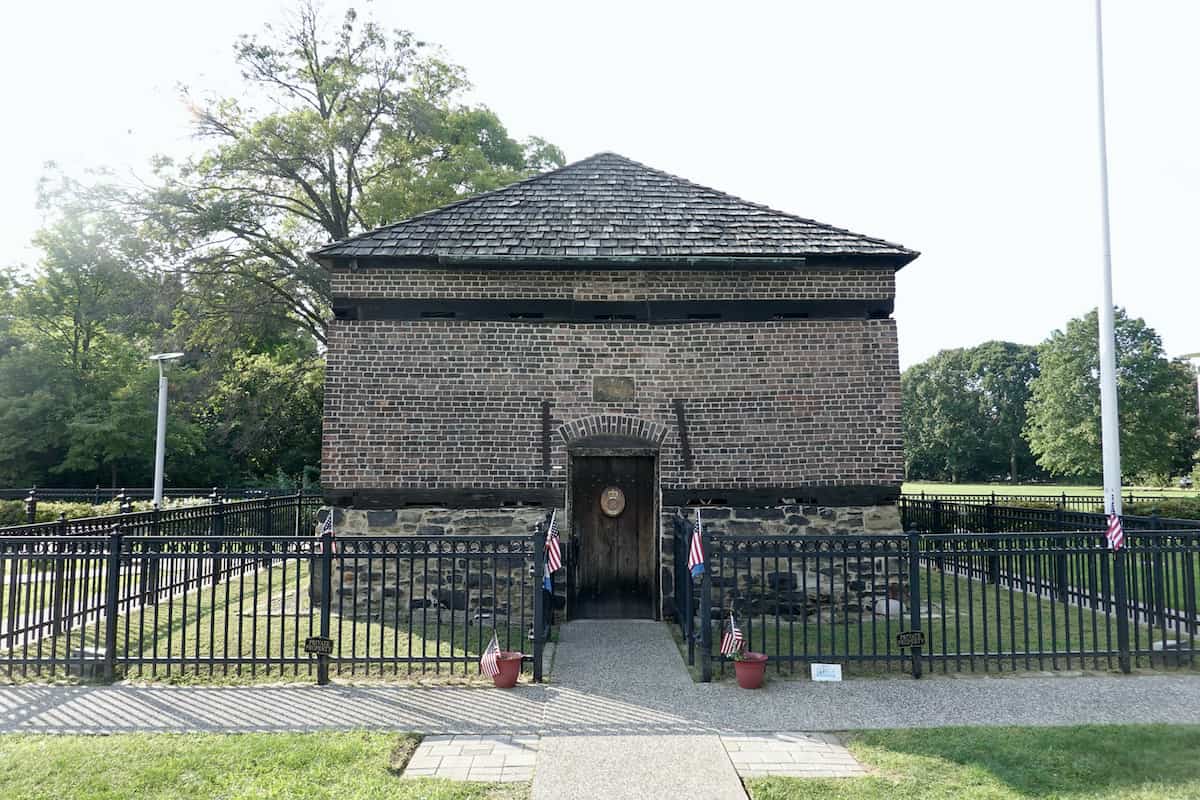
Randyland (Pittsburgh)
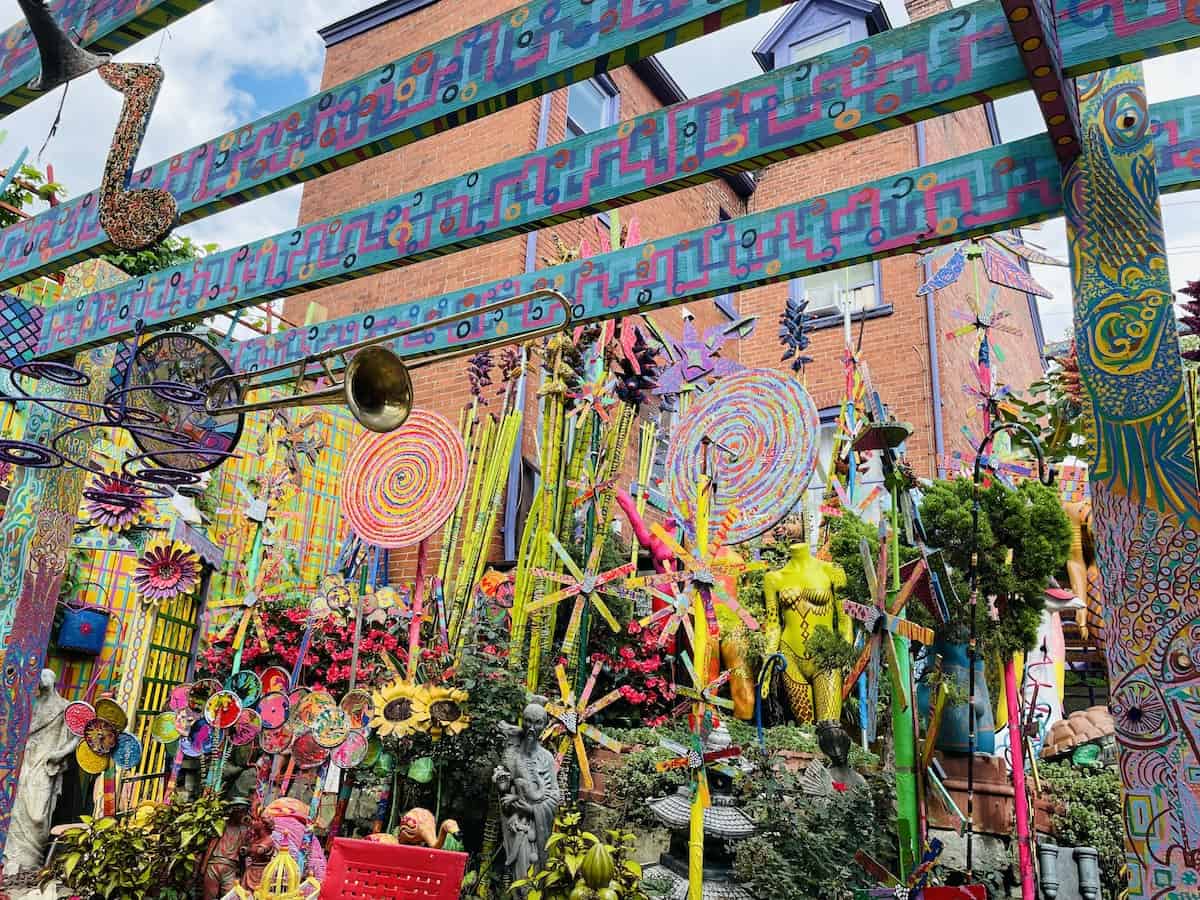
An off-the-beaten-track and whimsical outdoor space is Randyland, north of Allegheny River, where you’ll find an explosion of colorful art created from everyday objects like mannequins, lawn furniture, and mirrors. By no means a major attraction, Randyland is a fun place to stop by if you have the time and are in the general area of the city. After a lot of time spent soaking in history at museums, I found a visit to Randyland a welcome break. Location: 1501 Arch Street, Pittsburgh
NOTE: The following attractions are south and east of Pittsburgh in southwestern Pennsylvania.
Braddock’s Battlefield History Center
Ten miles southeast of downtown Pittsburgh is another site, Braddock’s Battlefield History Center, that profiles the Battle of the Monongahela on July 9, 1755, on the very site of that French and Indian War conflict. Learn about this pivotal battle and its lasting impact on all involved including the French, English, and their respective allies. 609 Sixth Street, North Braddock, PA
Friendship Hill National Historic Site (Point Marion)
Located in what was once the edge of America’s frontier is the home of an influential man, Swiss-born Albert Gallatin, who served his adopted country, just in its infancy, in several critical capacities. Gallatin served as Secretary of the Treasury in Thomas Jefferson’s and James Madison’s administrations. Also, Gallatin was involved in several significant events of the day including the Whiskey Rebellion, the Louisiana Purchase, and the Lewis and Clark Expedition. When Gallatin built the house in the 1780s, he named it Friendship Hill.
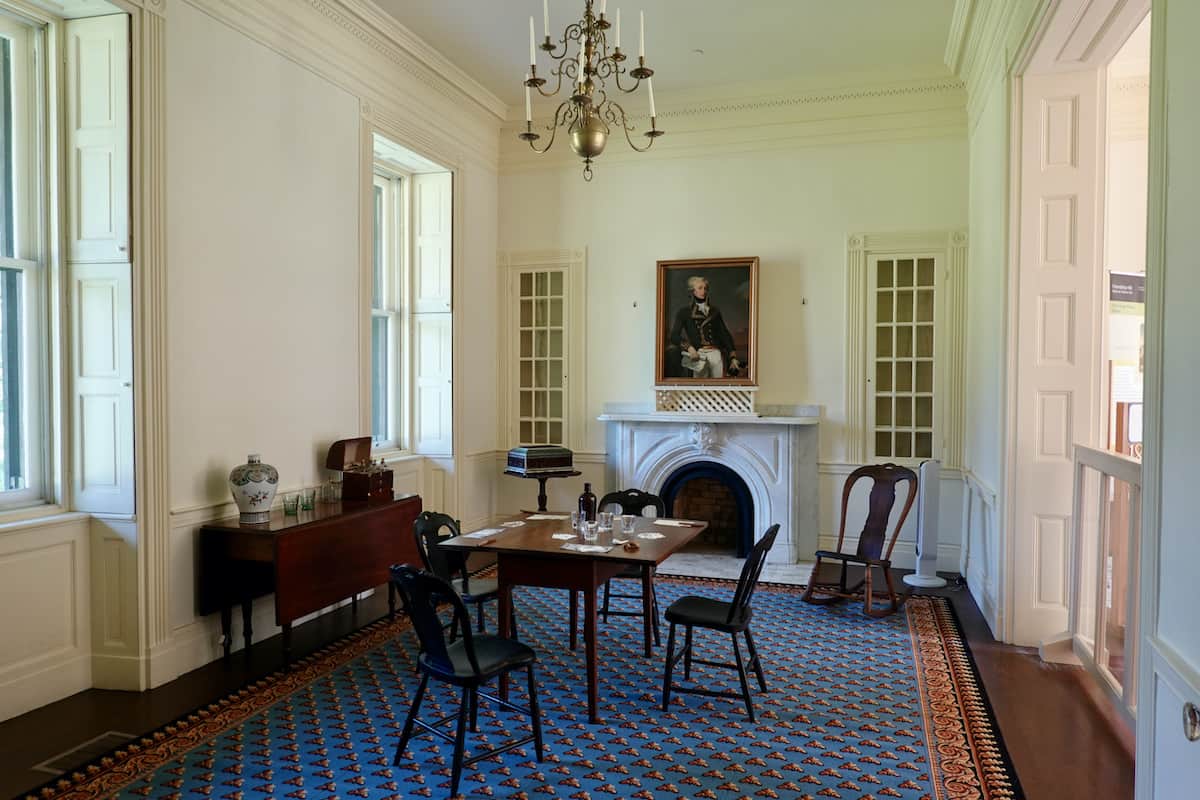
Most rooms in the house are minimally furnished. Outside, the grounds offer 10 miles of dog-friendly trails through woods and meadows as well as a bluff overlooking the Monongahela River. Enjoy walks and hikes from sunrise to sunset; keep in mind that the grounds are accessible at times when the house is not. Near the large parking lot sit a pavilion, picnic area, and restrooms. Location: 223 New Geneva Road, Point Marion. Friendship Hill is 70 miles south of Pittsburgh.
Fort Necessity (Farmington)
Fort Necessity was the site of a skirmish between French and British militias in July 1754 that helped to mark the dawn of the French and Indian War. It also left a blemish on George Washington’s legacy. At that time, Washington was a young man in the Virginia militia at the rank of colonel.
Just over 50 feet in diameter, the circular fort was built by George Washington’s men in the Great Meadows, a clearing in the forest that occurred naturally on the terrain. It was a low-lying area, surrounded by trees, that provided a place for troops to live, livestock to graze, and supplies to be stored. White oak trees were cut and split lengthwise to create the posts that comprised the fort’s perimeter. Inside they built a small wooden building to store supplies. Outside the fort were trenches used to construct a rectangular redoubt of earth and logs, an area behind which soldiers would try to defend themselves if attacked. The clearing benefited the British soldiers, but the nearest treeline was not far away.
What Happened at Fort Necessity
In early July 1754, the 22-year-old George Washington was in charge of close to 400 men here. (The number of men under Washington swelled after the death of General Braddock, who had been in command of many of them, and who had been injured in a previous battle). The French and their allied Native Americans attacked the British at Fort Necessity as retaliation for the British raid on them just over a month earlier. (You can visit that site at Jumonville Glen, mentioned later in this article, a short drive away.)
The French used the treeline at Fort Necessity to their advantage and surrounded Washington and his troops. The battle took place on July 3, 1754 — a day when rain poured down. The ground was muddy. Soldiers were drenched. Many of the British troops’ muskets misfired because of the dampness. And the French soldiers were firing from the tree line – at a distance musket fire could successfully reach its targets at Fort Necessity. It quickly became clear that Washington’s regiments had no chance of victory.
George Washington’s Surrender
As it turned out, Washington ultimately relented and accepted France’s offer to surrender and, under those terms, he and his men could leave the area with honor. Washington signed the surrender document, written in French. Because he did not read French, Washington didn’t realize that, by signing the document, he was admitting guilt for assassinating Joseph Coulon de Jumonville, a French military commander, in the previous clash in May. (That episode is seen as the spark that ignited the French and Indian War.) This was the first and only time Washington surrendered in his military career.
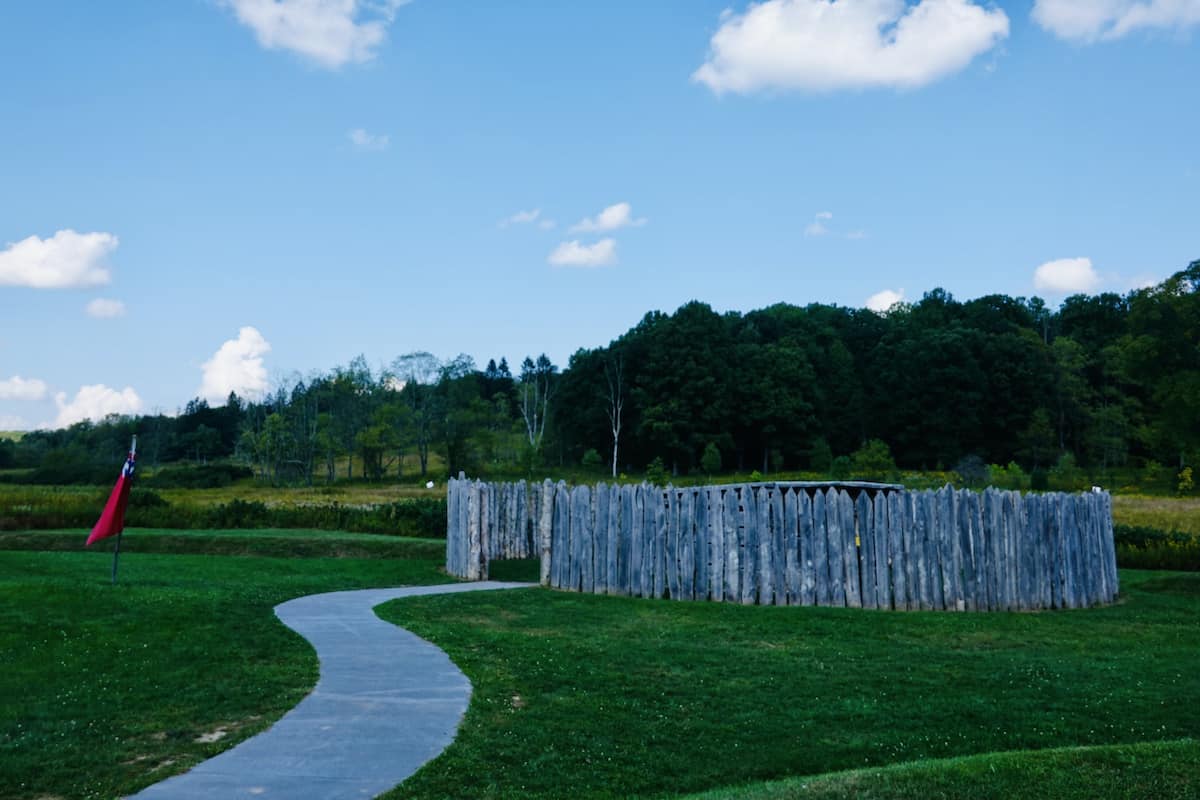
Visiting Fort Necessity
About a 90-minute drive from Pittsburgh and located right on Route 40, “(The National Road” or “The National Pike”), Fort Necessity has a helpful visitor center with informative displays. Walk outside along the short path and you’ll see the recreation of Fort Necessity. What you see today was constructed using information gathered from extensive archeological findings in the first half of the 1900s. Be sure to stop by the nearby Mount Washington Tavern, Braddock’s Grave, and Jumonville Glen after visiting Fort Necessity. All the sites are operated by the National Park Service. More information on them is below.
Although not large in size, a visit to Fort Necessity is definitely worth some time. While here, you will undoubtedly put yourself in the shoes of all sides in the conflict (the French and the British – as well as the Native Americans, some who supported the French, and others who supported the British). Just imagine what July 3, 1754, was like for all of them. Location: National Pike, Farmington. 70 miles southeast of Pittsburgh, 25 miles east of Friendship Hill National Historic Site.
Mount Washington Tavern (Farmington)
A short walk away from Fort Necessity is the Mount Washington Tavern, built in the 1830s, that served as a rest stop for stagecoach passengers. It’s presented today with furnishings as it might have been at the time with a bar room for men on one side of the entrance hall and a parlor room for women and children on the other side. A large table dominates the dining room where travelers were served family style. Upstairs are bedrooms – some for men; others for women and children. What makes this an interesting visit is being able to see the different spaces furnished appropriate to the time period and informational signs to give context to what is displayed. Location: Route 40/National Pike, Farmington. It’s a .6-mile drive from the Fort Necessity visitor center on the park’s interior road.
Braddock’s Grave (Farmington)
One mile west of Fort Necessity is Braddock’s Grave: the burial site of British Major General Edward Braddock who was fatally wounded in the French and Indian War. He died on July 9, 1755 – a few days after being shot during a battle with the French. George Washington officiated at Braddock’s funeral on the road that the British had been building westward. Washington’s soldiers marched on Braddock’s grave in an effort to conceal it from the French or their Native American allies. In the early 1800s, workers found some of Braddock’s remains; those remains were later moved to a knoll a short distance from the road and a marker was erected there commemorating Braddock. Location: National Pike, Farmington, 2 miles west of Fort Necessity.
Jumonville Glen (near Farmington)
A few miles from Fort Necessity is Jumonville Glen, a hilly area where the first shots of the French and Indian War were fired. Young George Washington’s troops attacked French troops camped here in May 1754. During that skirmish, the French commander Joseph Coulon de Jumonville was killed by Native Americans who were allied with and in the British contingent.
Later, the French retaliated by assaulting the British, under Washington’s leadership, defeating them at Fort Necessity. It was at Fort Necessity that Washington signed the surrender document that was written by the victors in French. By signing it, Washington unknowingly admitted to assassinating Jumonville. This later became known as the Jumonville Affair.
Today visitors enjoy the trails (several trails can be combined to make a loop) and the views with informational signs along the way. Location: 998-986 Old Braddock Rd, Hopwood; about 7 miles from Fort Necessity.
Christian W. Klay Winery (near Farmington)
The setting of Christian W. Klay Winery drew me to it, but the wine and relaxation it offered after a busy day soaking in history made me savor the experience. There are a variety of whites and reds and an outside space with tables and chairs. Christian W. Klay is one of eight wineries along the Southwest Passage Wine Trail. Location: 412 Fayette Springs Rd, Chalkhill. It’s 3 miles west of Fort Necessity along Route 40/National Pike.
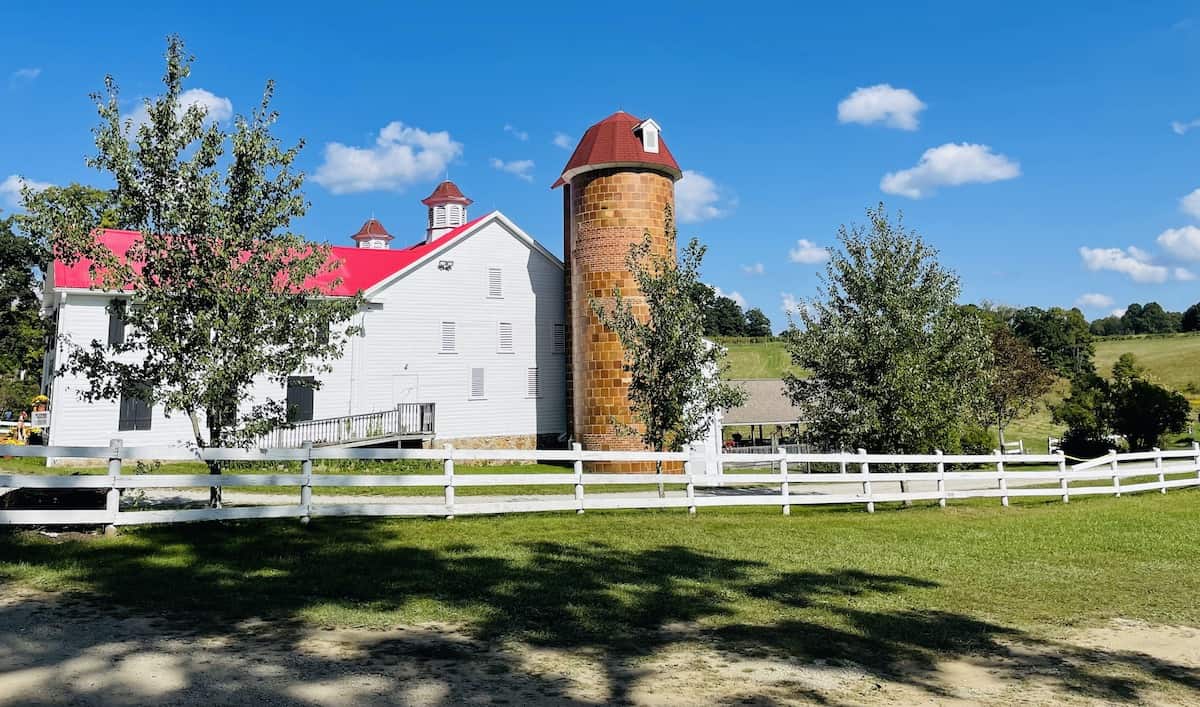
Fallingwater (Mill Run)
About 70 miles southeast of Pittsburgh sits Fallingwater, the iconic 5,330 square-foot home that Frank Lloyd Wright designed for the Kauffman family, owners of a large Pittsburgh department store, in the 1930s. It was their weekend retreat. The home exemplifies Frank Lloyd Wright’s belief that the architecture of a building should live in harmony with the nature that surrounds it. The home is cantilevered over a waterfall, and there are steps from the living area down to the stream below it. Those are just two of the unique features of this UNESCO World Heritage Site.
Fortunately for the rest of the world, this home is open to the public. A few years after Mr. Kauffman’s death, his son (who had inherited the property) turned the property and some surrounding acreage to the Western Pennsylvania Conservancy. Today the Conservancy’s Bear Run Nature Reserve totals more than 5,000 acres and is a haven for hiking, camping, fishing, and hunting.
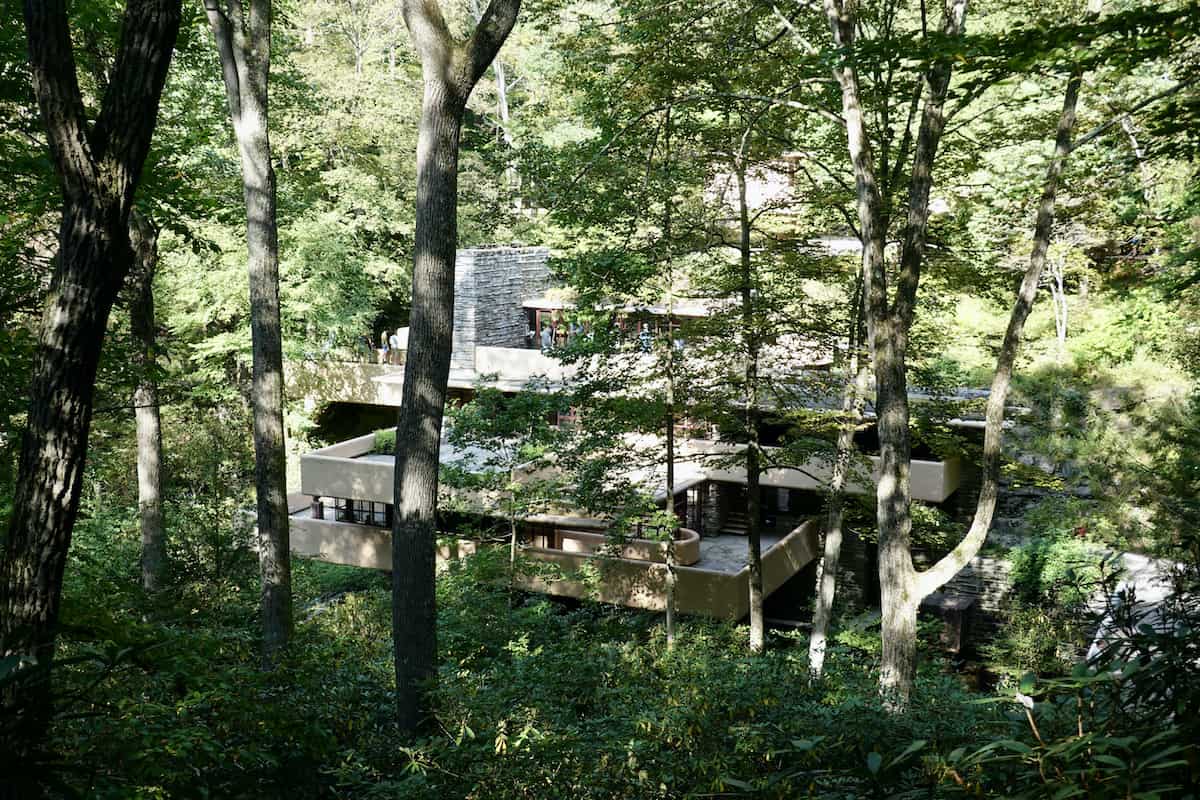
Visiting Fallingwater
To tour Fallingwater (a must-see!), book your reservation online well in advance of your planned visit as this is a very popular site. If you can’t get tickets for a guided architectural tour, you can obtain a grounds pass that allows you to walk around the outside of the home and surrounding areas. In any case, make sure to walk up to the overlook that provides an impressive view of the home. A couple of trails lead from the house to the Youghiogheny River and gorge. There’s a gift shop and cafe at the visitor center. Location:1491 Mill Run Rd, Mill Run
Kentuck Knob (Chalk Hill)
Less than 7 miles from Fallingwater, Kentuck Knob is a 2,200-square-foot hexagonal one-story home designed by Frank Lloyd Wright in the early 1950s. The Hagans, who owned the land and whose company produced Hagan ice cream, a local treat, were quite familiar with Fallingwater since the Hagans and the Kauffmans were good friends. So they entrusted Frank Lloyd Wright with the design of their new home that sits just below a hilltop ringed by trees. The Hagans lived there for about 30 years. After that, Kentuck Knob was sold to a British couple who added sculptures to the grounds and incorporated public tours.
Visiting Kentuck Knob
Book your online reservations for guided house tours ahead of your planned arrival. The tours help explain Frank Lloyd Wright’s philosophy on residential architecture and they’re quite interesting. Afterward, spend time soaking in the impressive view of the Youghiogheny River Gorge from beyond the home, and enjoy a walk along the wooded paths and sculpture garden. End your visit at the visitor center for some delicious Hagan ice cream and to browse the gift shop. Location: 723 Kentuck Road, Chalk Hill
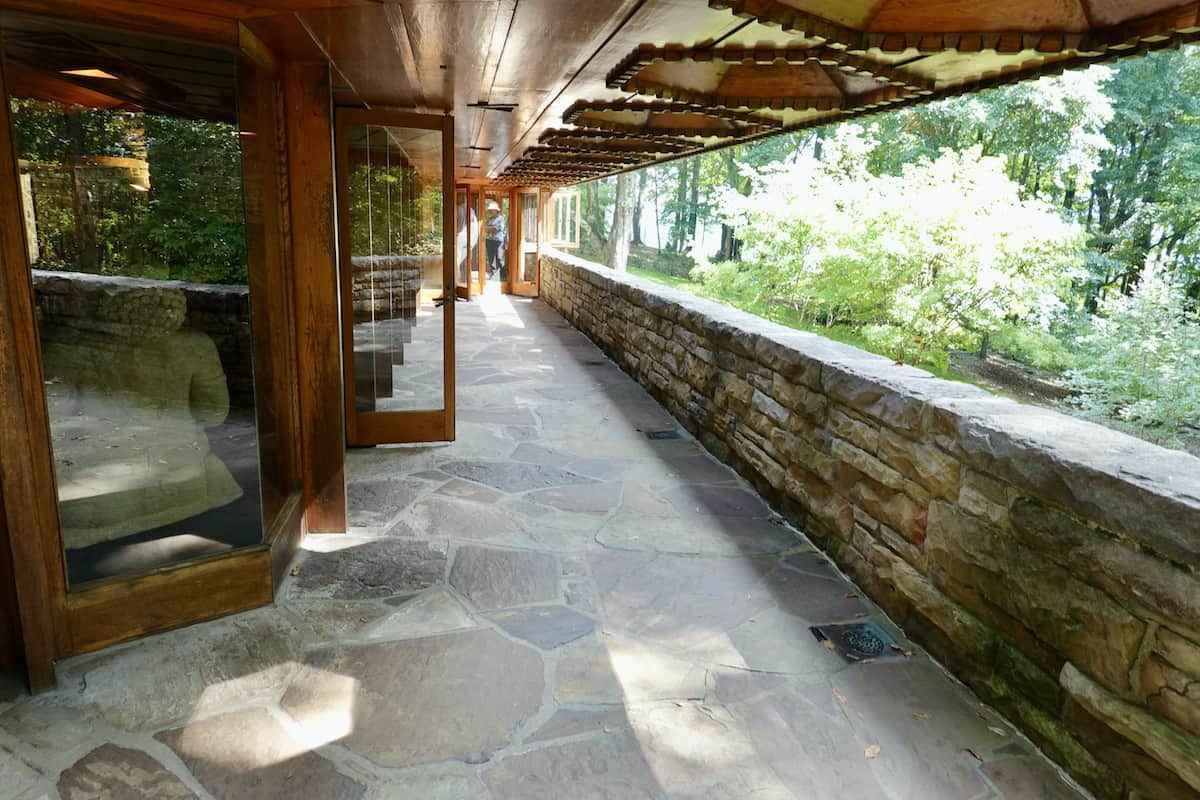
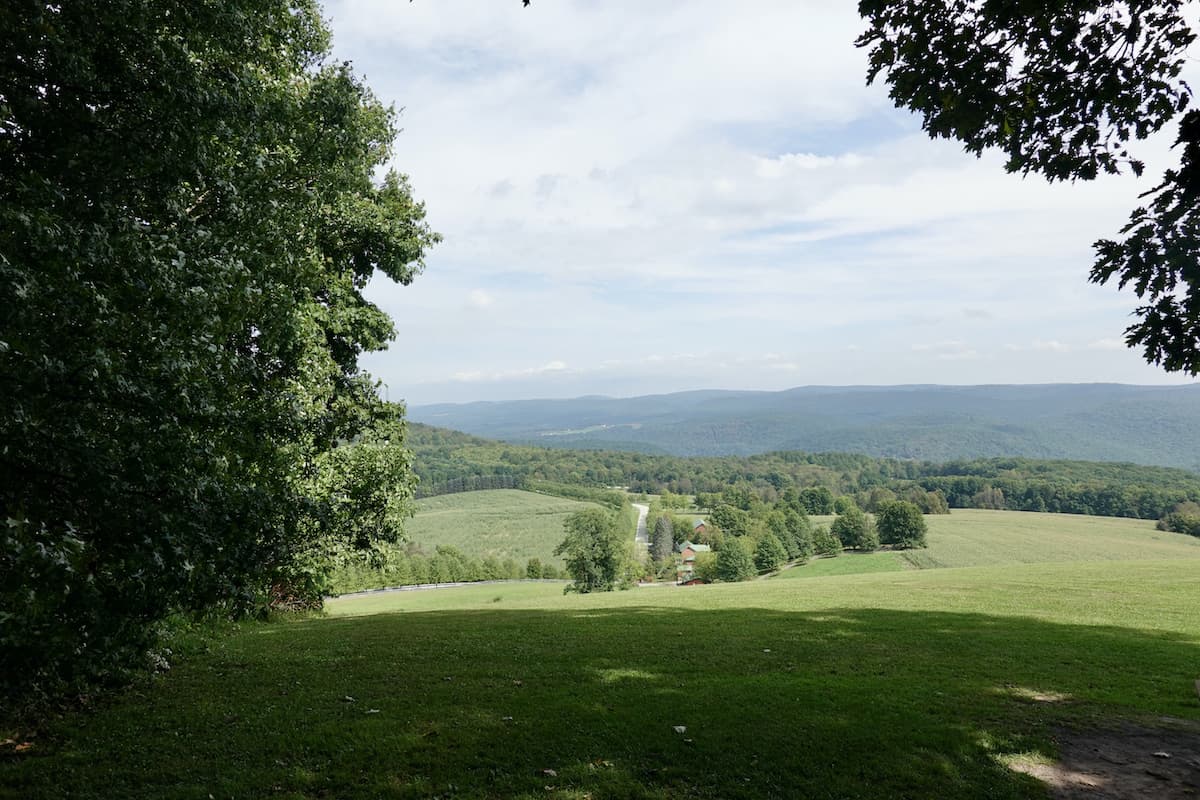
Ohiopyle State Park (Ohiopyle)
Close to Fallingwater and Kentuck Knob, the huge Ohiopyle State Park – all 20,000+ acres of it – has over 25 miles of hiking and biking trails (including some on the Great Allegheny Passage), fishing, picnicking, horseback riding, whitewater rafting, camping plus snowmobiling and cross-country skiing. That covers just about everyone’s outdoor interests!
The Youghiogheny River passes through the park and provides amazing views and whitewater rafting opportunities. There are outlooks and picnic areas throughout the park, too. Some scenic spots (many featuring waterfalls) are Baughman Rock, Cascades Waterfall, Cucumber Falls, Meadow Run Waterslides, and an outlook by the Tharp Knob picnic area.
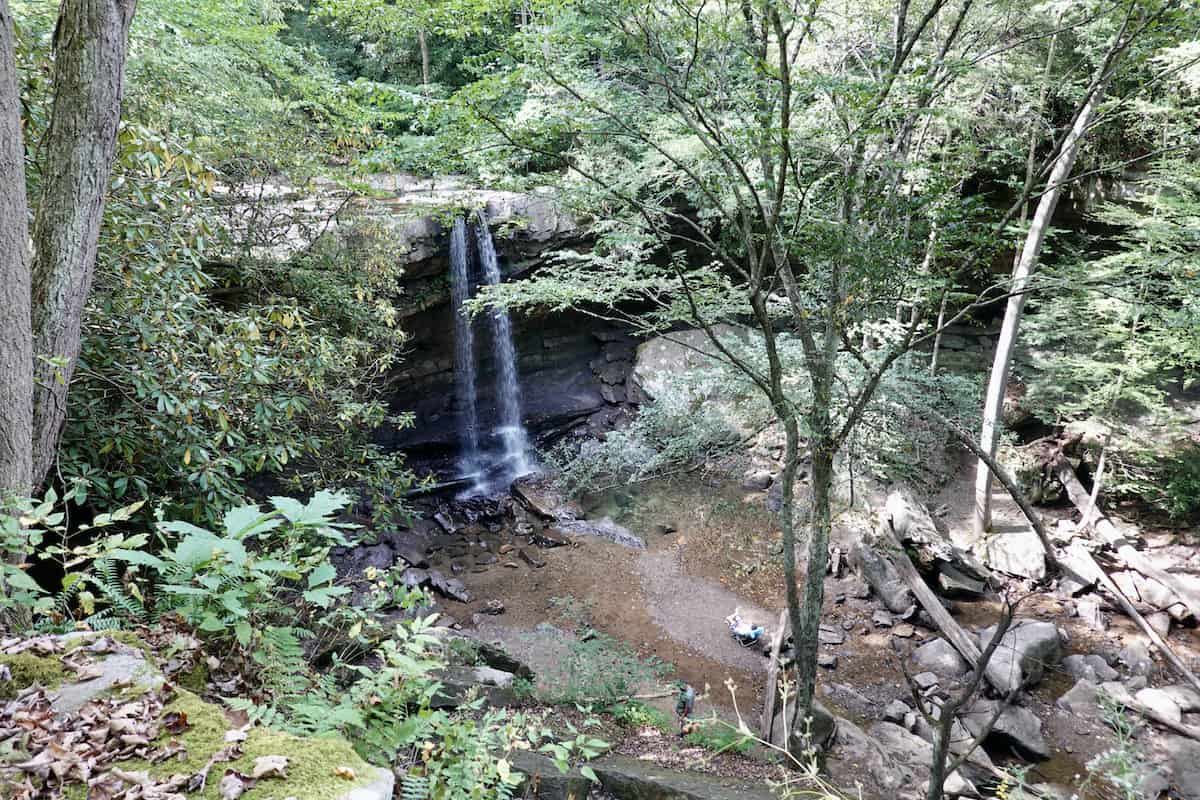
Fort Ligonier (Ligonier)
Constructed in 1758, Fort Ligonier was a British fortification along the newly formed road across Pennsylvania to what would become Pittsburgh. The impressive full-scale reconstruction of the fort that stands today is staged as it was when it was in use. The buildings include barracks, an officers’ mess, a commissary, and an underground magazine. Visitors enter Fort Ligonier through a building that boasts an art gallery and a museum with artifacts from onsite archeological discoveries. Location: 200 S Market St, Ligonier
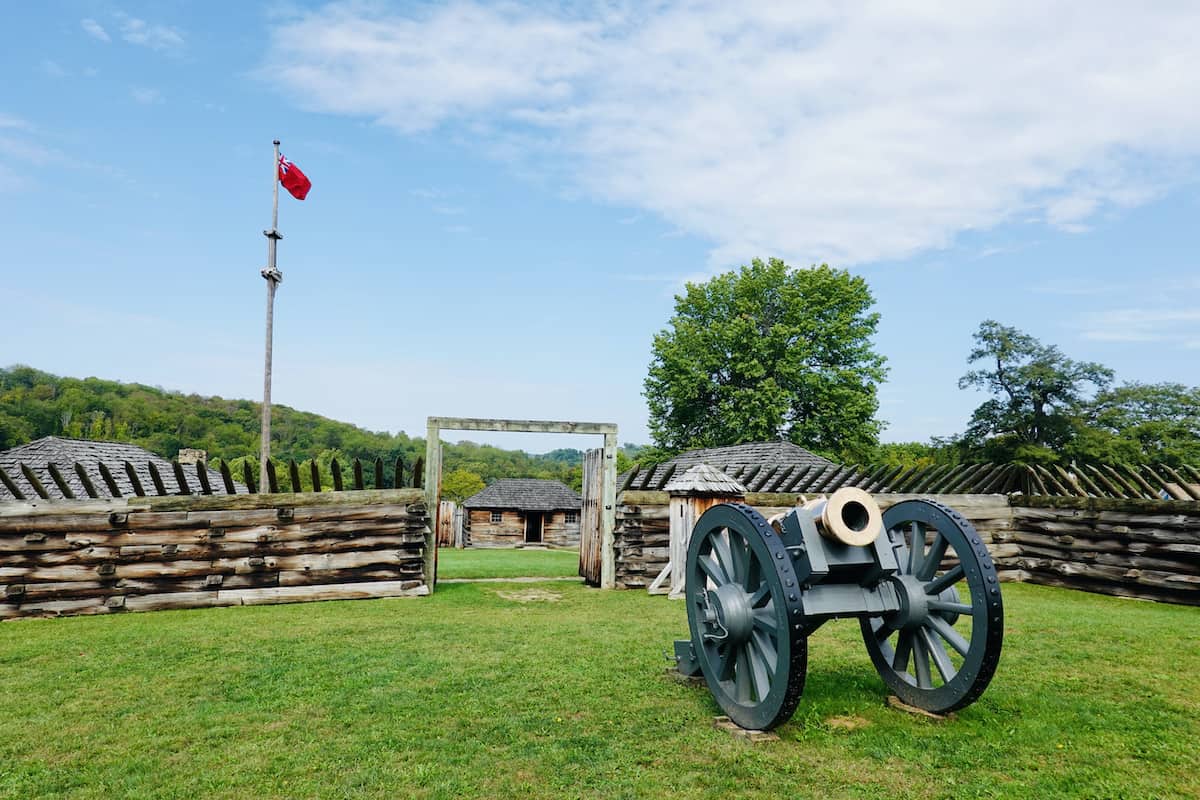
Flight 93 Memorial (Stoystown)
The Flight 93 Memorial commemorates the passengers and crew on United Flight 93 who lost their lives when their plane crashed into an open field in southwestern Pennsylvania on September 11, 2001. Flight 93 was one of the four passenger planes that were hijacked that day. A group of the plane’s passengers decided to take action and try to take control of the plane from the hijackers. The plane eventually crashed into this field about 65 miles southeast of Pittsburgh.
At the memorial are several moving remembrances to those who died here: The Tower of Voices is a 93-foot tall structure holding 40 wind chimes (one for each passenger and crew member); the Visitor Center Complex has exhibits, artifacts, and a viewing platform in line with the flight path; and Memorial Plaza includes the Wall of Names (listing passengers and crew on large marble panels), the boulder marking the impact site, and a hemlock grove. Location: 6424 Lincoln Hwy, Stoystown
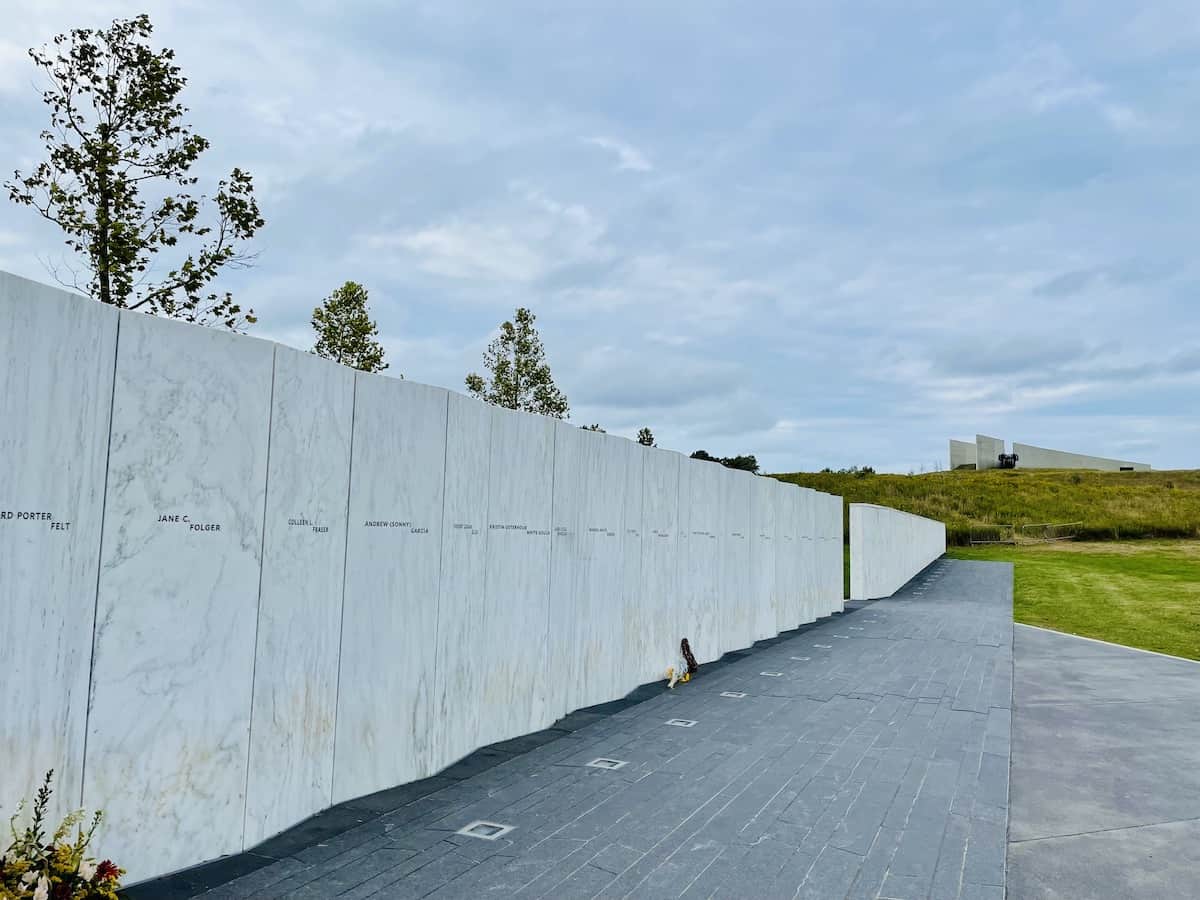
Johnstown Flood National Memorial (South Fork)
Life changed in an instant for all those in the region on May 31, 1889, when the South Fork dam was breached by the swollen waters of Lake Conemaugh, situated on high ground. It had been raining heavily for days, and the dam’s earthen fortifications collapsed, sending 20 million tons of water rushing down along the Little Conemaugh River to the town of Johnstown – killing over 2,200 people. Today there’s a visitor center with a film and exhibits that bring that horrific day alive. Outside, a short drive downhill, are the north and south ends of the dam with viewing areas.
The Johnstown Flood National Memorial was an interesting site to visit (mainly because of the 35-minute film) but there wasn’t much to see outside. If you’re not able to visit the Johnstown Flood National Memorial but want to learn more, I recommend reading the riveting retelling of this tragic event in historian David McCullough’s The Johnstown Flood. Location: 733 Lake Rd, South Fork
Map
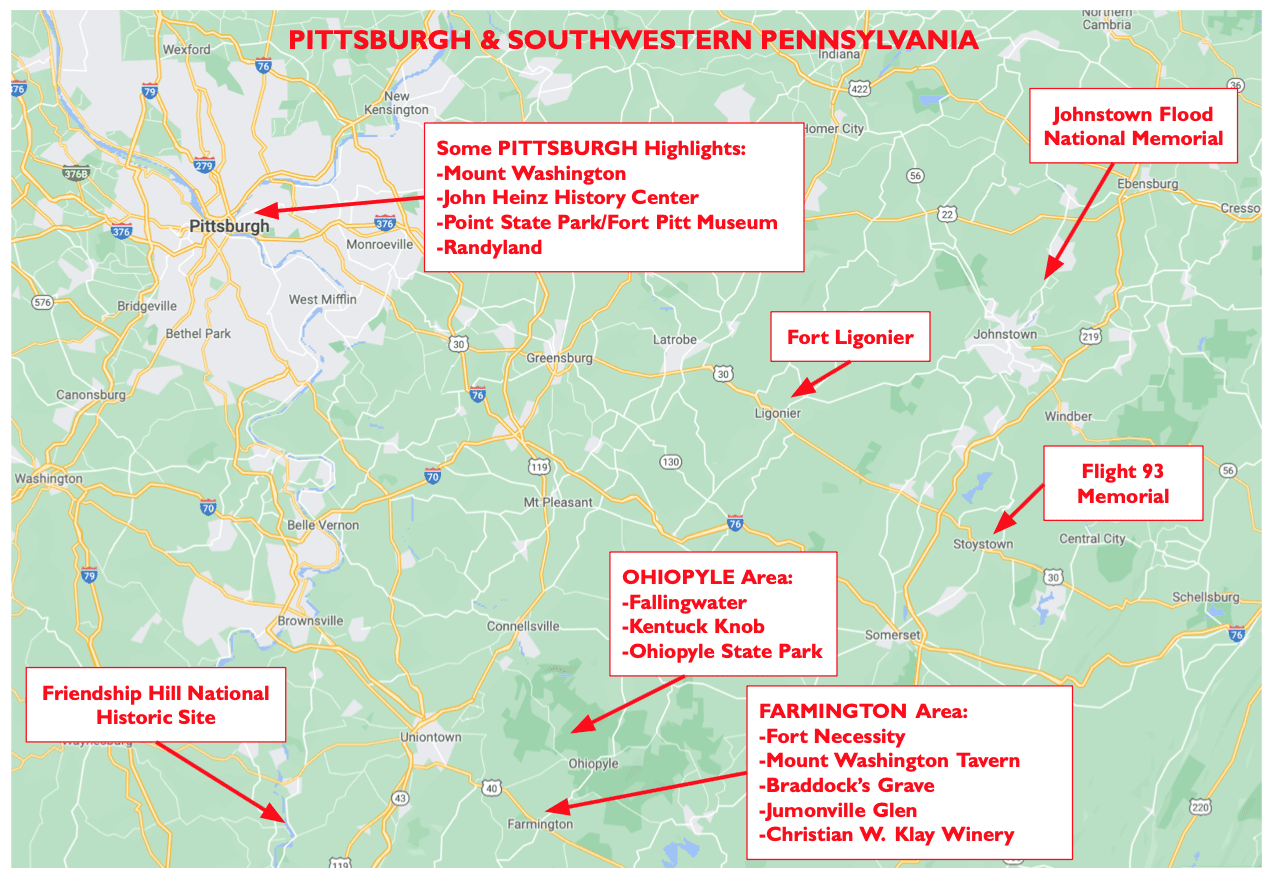
Itinerary Ideas
My husband and I squeezed a lot into our 7-day southwestern Pennsylvania journey: four national park sites, two architectural icons, several interesting museums, an expansive state park with great trails, a winery, and more. There was so much we wanted to see, so our days were busy. The best time to plan a similar trip is from late spring to early fall when you can take advantage of the long days and comfortable temperatures.
Suggested Route
Here’s a suggested route if you’re visiting all the sites mentioned in this article. If your time is limited, though, consider focusing on just Pittsburgh or visiting some sites (listed below) that are clustered together by day. They’re arranged so are they geographically close to each other.
Day 1-3: Pittsburgh.
Day 4: Drive south to Friendship Hill National Historic Site, the home of Albert Gallatin who served in several influential capacities in the early U.S. presidential administrations plus nine miles of woodland trails and a picnic area. From there, head east for visits to Fort Necessity (and its associated sites: Mount Washington Tavern, Braddock’s Grave, and Jumonville Glen); and if you’d enjoy a sip of local wine, consider Christian W. Klay winery — all doable in one day.
Day 5-6: The next three sites are close to each other: Fallingwater and Kentuck Knob (the two homes designed by Frank Lloyd Wright); and the expansive Ohiopyle State Park with 79 miles of trails.
Day 7: A day with a bit more driving: Fort Ligonier and the Flight 93 Memorial. (You could add a stop to the Johnston Flood National Memorial, but I’d suggest it only if it’s high on your list of historical sites to visit.)
Where We Stayed and Ate
In Pittsburgh, my husband and I stayed at the conveniently located Hampton Inn in the Strip District, just beyond the downtown, because of its proximity to places we wanted to visit. It’s across the street from the John Heinz History Center, and steps from the riverside Three Rivers Heritage Trail that leads you on a walk westward to Point State Park.
Another time, we walked from the hotel across the David McCullough bridge to some interesting sites on the north side of town. We also took advantage of the convenience offered by the Hop On, Hop Off bus that has a stop across from the Hampton Inn at the John Heinz History Center. We found we liked the laid-back vibe of the Strip District and its variety of dining options — especially Roland’s Seafood Grill, Kaya, Cafe Raymond, and Little Bangkok. All were a relaxing walk from the hotel.
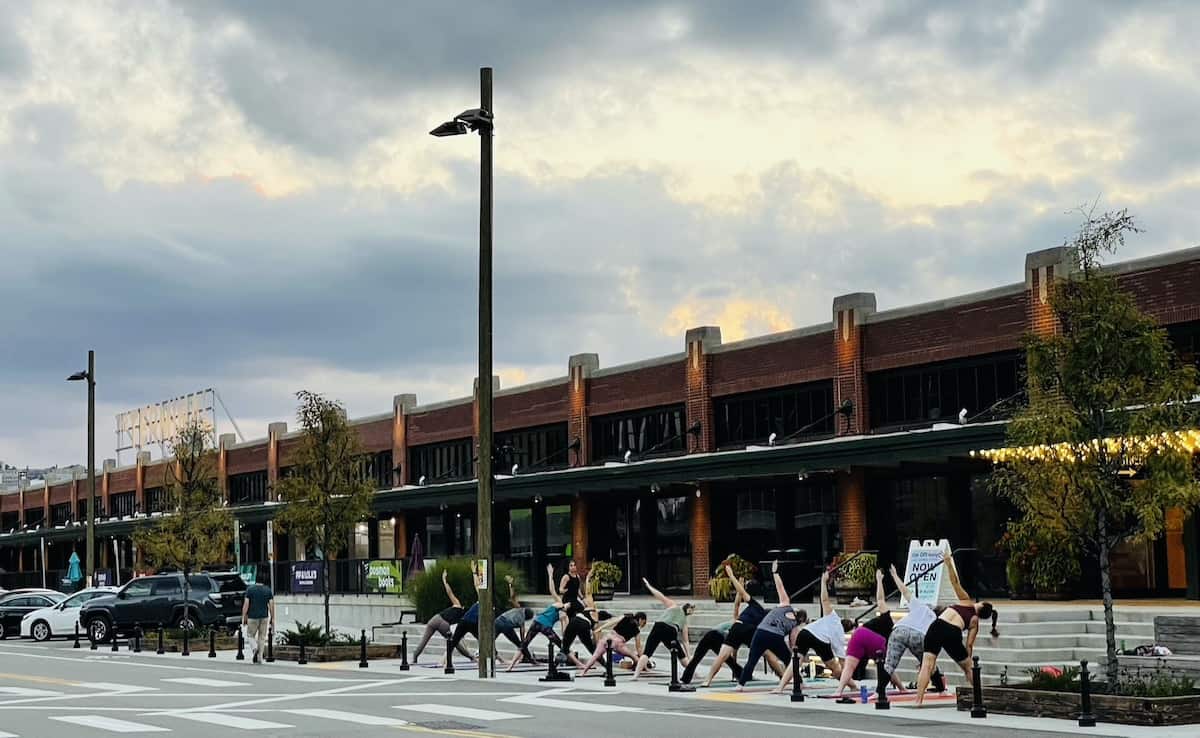
For the rest of our trip, we stayed at the Historic Summit Inn because of its location close to other attractions southeast of Pittsburgh. Although the location was perfect for us, we found the property to be quite dated. Nearby Uniontown has some good restaurants including Titlow Tavern and Grille.
Other Pennsylvania Attractions
If you’re on the other side of the state, in its most populous city, consider a self-guided walking tour of Philadelphia through its historic district. Aside from walking in the footsteps of the country’s forefathers, there are plenty of other things to enjoy in Philadelphia including a visit to the impressive Museum of the American Revolution.
Also consider these great places to visit in Pennsylvania:
- Bushkill Falls, Poconos
- Colonial PA Plantation, outside Philadelphia
- Covered Bridges of Bucks County
- Covered Bridges of the Lehigh Valley
- Gettysburg Visitor Guide
- Hawk Mountain Sanctuary, Lehigh Valley
- Hickory Run State Park, Poconos
- Housenick Park, Lehigh Valley
- Jacobsburg State Park, Poconos area
- Museum of the American Revolution, Philadelphia
- National Museum of Industrial History, Lehigh Valley
- Best Things to Do in Philadelphia
- Philadelphia: Fairmount Park’s Unique Colonial Mansions & Their Stories
- Philadelphia Self-Guided Walking Tour
- Promised Land State Park, Poconos
- Ricketts Glen State Park, Poconos
- Ridley Creek State Park, outside Philadelphia
- Tyler State Park, Bucks County
- Valley Forge National Historical Park, outside Philadelphia
- Washington Crossing Historic Park, outside Philadelphia
Final Thoughts
My husband and I have visited Pittsburgh several times over the years. On this trip, we added spots beyond the city. History buffs, we really enjoyed exploring sites steeped in American history – places most people just read about: the conflicts at Jumonville Glen and Fort Necessity that sparked the French and Indian War; Fort Ligonier where the British built an extensive fort to support the needs of its army as it marched westward towards the Forks of the Ohio River – that hotly contested and prized locale; Fallingwater and Kentuck Knob where Frank Lloyd Wright put his distinctive architectural stamps on homes in the 1930s and 1950s; and the Flight 93 Memorial. We also had fun hiking the trails and taking in the vistas at Ohiopyle State Park. So much to explore!
Comments?
Feel free to leave a comment if you’d like to share your experiences at any of the places mentioned in this article or if you have additional suggestions for travelers to southwestern Pennsylvania. Thanks! 🙂

